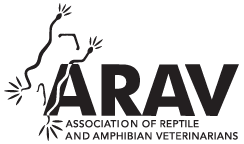Use of Caudoventral-Craniodorsal and Cranioventral-Caudodorsal Oblique Radiographic Views made at 45° to the Frontal Plane for the Evaluation of Pelvic Girdles in Painted Turtles (Chrysemys picta)
Turtles often present to wildlife rehabilitation centers for trauma secondary to motor vehicle collisions. Injuries to the pelvic girdles in turtles are challenging to assess on standard radiographic views due to the superimposition of bones. Pelvic trauma may have long-term consequences for ambulation and reproduction. The novel use of caudoventral-craniodorsal and cranioventral-caudodorsal 45° oblique radiographic views in western painted turtles (Chrysemys picta bellii) at the Wildlife Rehabilitation Center of Minnesota has improved differentiation of bones in the pelvic girdle. Using dorsoventral radiographs, 45% of western painted turtles with caudal carapace fractures had suspected injuries to the pelvis. After using oblique views, 98% of western painted turtles with caudal carapace fractures were found to have pelvic involvement. These radiographic views improve diagnostic ability, facilitate medical and surgical interventions, and aid in monitoring the healing process.Abstract

Placement of gauze cranial to femur in prefemoral fossa of a painted turtle (Chrysemys picta) to prevent retraction of legs into shell.

Positioning of a painted turtle (Chrysemys picta) for H-view (caudoventral-craniodorsal 45° oblique view).

Positioning of a painted turtle (Chrysemys picta) for A-view (cranioventral-caudodorsal 45° oblique view).

Skeletal preparation of a painted turtle (Chrysemys picta) pelvis. (A) Lateral view with cranial to the left and caudal to the right. (B) Cranial to caudal view. (C) Dorsal to ventral view.

Oblique radiographic views of a normal painted turtle (Chrysemys picta) pelvis. (A) H-view and (B) A-view, with ilium highlighted in green, pubis highlighted in orange, and ischium highlighted in blue. R: right.

Bilateral ilium fractures in a painted turtle (Chrysemys picta). (A) Dorsoventral view. (B) H-view with fractures highlighted. (C) A-view with fractures highlighted. R: right.

Unilateral ilium fracture in a painted turtle (Chrysemys picta). (A) Dorsoventral view. (B) H-view with fracture highlighted. (C) A-view with fracture highlighted R: right.

Left pubic and ischium fracture in a painted turtle (Chrysemys picta). (A) Dorsoventral view. (B) H-view with ischial fracture highlighted in blue. (C) A-view with pubic fracture highlighted in orange. R: right.

Left coxofemoral luxation in a painted turtle (Chrysemys picta), with proximal femur highlighted. (A) Dorsoventral view. (B) H-view. (C) A-view. R: right.



